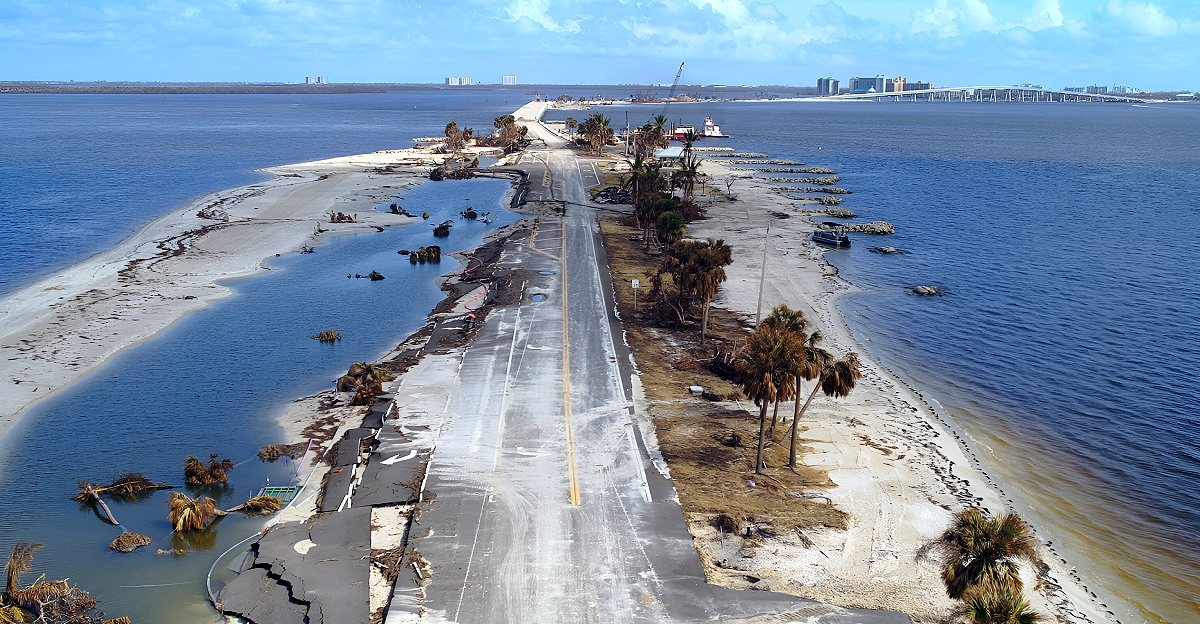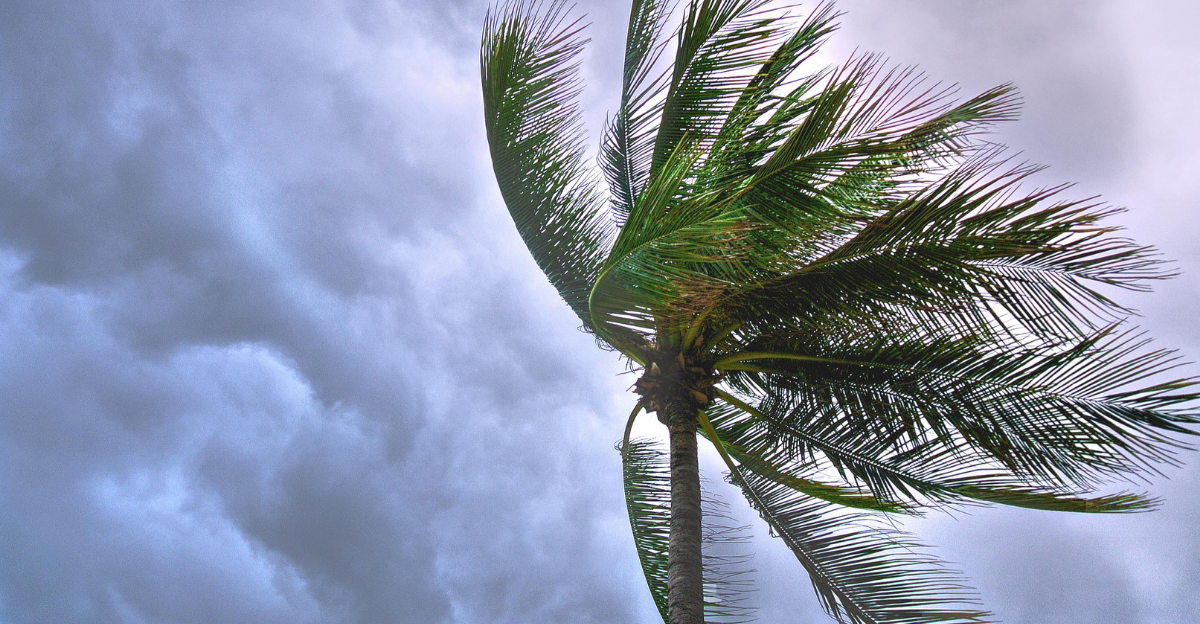
With a mega storm threatening to hit more than 400 miles of Florida’s coastline, especially the Gulf Coast and Big Bend areas, the state is facing a severe weather threat. In the 2025 hurricane season, there is a 62% chance of hurricanes striking the Florida coast and a 90% chance of tropical storms, with a 33% chance of a significant hurricane occurring within 50 miles of the coast, according to seasonal forecasts from Colorado State University (CSU) and the National Oceanic and Atmospheric Administration (NOAA).
With a mega storm threatening to hit more than 400 miles of Florida’s coastline, especially the Gulf Coast and Big Bend areas, the state is facing a severe weather threat. In the 2025 hurricane season, there is a 62% chance of hurricanes striking the Florida coast and a 90% chance of tropical storms, with a 33% chance of a significant hurricane occurring within 50 miles of the coast, according to seasonal forecasts from Colorado State University (CSU) and the National Oceanic and Atmospheric Administration (NOAA).
The Growing Risk of Hurricanes in Florida

Although Florida’s susceptibility to hurricanes has long been known, it has become more noticeable in recent years. Florida has seen a number of devastating hurricanes since the middle of the 20th century, such as Hurricane Andrew in 1992, which resulted in damages of about $27 billion (adjusted to 2020 dollars), and Hurricane Irma in 2017, which left millions without power and caused billions of dollars in economic losses.
For instance, four hurricanes (Charley, Frances, Ivan, and Jeanne) hit Florida during the 2004 season, resulting in increased damage and drawn-out recovery times. The systemic risk that Florida faces is demonstrated by such a clustering phenomenon.
Trend Analysis: Storm Intensification and Climate Change

The majority of scientists concur that storm frequency and intensity are increased by climate change. As a close meteorological fuel, warmer sea surface temperatures (SSTs) propel hurricanes from harmless tropical depressions to Category 4 or 5 superstorms at frighteningly high speeds. SSTs in the western Atlantic and Gulf of Mexico are currently several degrees higher than the historical seasonal average, allowing for longer-lasting and more powerful storms.
Natural coastal barriers like sand dunes and mangrove forests, which have long shielded these susceptible shorelines, could be destroyed by the high storm surge of up to 15 feet that is predicted. These damages raise Florida’s susceptibility to more frequent floods in the future and cause long-term ecological degradation. Furthermore, new trends point to storms with more expansive wind fields and unpredictable paths, making it more difficult for forecasters to predict where landfall will occur accurately.
Difficulties in Public Response and Emergency Management

Beyond weather, there are other factors that affect Florida’s capacity to respond to the threat of megastorms effectively. Public complacency and evacuation fatigue endure despite effective emergency alert systems and decades of disaster experience. By juggling seemingly remote or exaggerated threats with their everyday lives, many residents suffer from cognitive dissonance, which impairs their motivation to respond. The scope of operational demands is highlighted by Governor Ron DeSantis’ emergency declarations, which cover 41 Florida counties and are backed by the deployment of 18,000 linemen for vital power restoration and thousands of National Guard troops to help with search, rescue, and logistics.
Uneven evacuation rates are caused by social vulnerability; access to shelter and transportation is frequently a barrier for marginalized groups. Because resources are limited and priorities need to be aligned across urban and rural areas, the 400+ mile stretch makes coordination between state and local agencies more difficult.
Unusual Perspective—Intersectoral Effects Outside of Weather

Beyond just causing physical harm, the mega storm has the potential to have a significant impact on Florida’s social and economic structures. Cancellations and long-term image damage threaten the state’s $100 billion+ tourism industry, putting thousands of jobs at risk and lowering tax revenues that are necessary for recovery. As insurance premiums rise and mortgage lenders reevaluate risks, real estate markets in coastal and flood-prone areas face increasing uncertainty that could lead to price collapses or market slowdowns.
Because job losses lower community stability and raise demand for social services, these sectoral stresses are interdependent with social welfare. When taken as a whole, these cross-sector effects demonstrate the systemic character of megastorm damage, highlighting the fact that Florida’s megastorm is more of a catalyst for structural economic and social changes that call for multidisciplinary policy responses than a natural disaster.
Insights from Previous Mega Storms

By identifying common areas of failure and success, analyzing case studies of extreme hurricanes helps to inform current mega-storm preparedness. Devastating engineering failures were brought to light by Hurricane Katrina (2005), when levees collapsed, causing massive flooding that overwhelmed emergency services and resulted in over 1,800 deaths, disproportionately among vulnerable populations.
The forthcoming mega storm presents a unique challenge because it threatens both ecologically sensitive areas like the Everglades and densely populated urban megaregions like Tampa-St. Petersburg. Because of these many fronts, environmental preservation and emergency response must work together. Lessons emphasize that minimizing loss requires coordinated multi-agency communication, decentralized resource staging, and real-time data sharing. Failures could recur on an exponentially larger scale if these historical warnings are disregarded.
Psychological Dynamics: Perception of Risk and Reaction

For efficient communication and adherence to safety procedures during mega-storm threats, it is essential to comprehend the psychology of risk perception. A sizable section of Florida’s population suffers from normalcy bias, which is the propensity to underestimate the severity of disasters based on past non-catastrophic experiences, despite widespread media coverage and government alerts.
Complacency is fostered by repeated false alarms or downgraded storm outcomes. Confusion or mistrust can also result from cognitive overload, which is the accumulation of contradicting information from social media and traditional sources. Evacuation compliance rates are impacted by the demographic differences in public officials’ trust across communities, which are influenced by political orientation and socioeconomic status.
Systemic Resilience Planning—A Novel Framework

A systemic resilience framework that incorporates technical, social, and governance aspects is necessary to address Florida’s mega storm threat. Enhancing complex infrastructure—such as elevating roads, strengthening levees, and hardening the electrical grid to better withstand strong winds and floods—is the primary goal of structural resilience. Optimizing evacuation networks, guaranteeing fair shelter access, especially for underserved groups, and incorporating mental health services into disaster response to address trauma are all components of social resilience.
Emerging technologies have promise: drones for quick damage assessment, crowdsourced situational reports to improve situational awareness, and artificial intelligence-driven storm intensity forecasting. Policy changes that address long-term land use and rebuilding codes must incorporate climate risk assessments into insurance underwriting and urban planning.
Third-Order Effects and Hypothetical Forecasts

Beyond its immediate effects, the mega-storm suggests likely long-term systemic repercussions that call for proactive planning. Florida’s subterranean aquifers, which are essential freshwater sources for millions of people, could become contaminated by prolonged saltwater intrusion from massive storm surges, leading to public health emergencies and water scarcity issues that disproportionately impact underprivileged communities.
Degradation of ecosystems, such as the loss of wetlands and fisheries, endangers biodiversity and diminishes natural carbon sinks, which has an indirect effect on efforts to mitigate climate change. Macro-economically speaking, Florida’s position as a central hub for trade and tourism in the country may be threatened, leading to realignments of federal emergency funds and a reordering of infrastructure investment priorities that impact national budgets.
From Caution to Knowledge

The impending mega storm event in Florida is a complicated crisis with significant ecological, psychological, economic, and human aspects. It is much more than a weather anomaly. Unprecedented storm probability combined with intensification brought on by climate change exposes stark weaknesses in systemic coordination, public preparedness, and infrastructure.
Florida has the chance to use this serious threat as a springboard for innovation in disaster preparedness across the country. Understanding the variety of factors and cascading effects improves our comprehension and directs effective strategies, transforming “red flags” into guiding lights of wise proactive action that protect lives and livelihoods in a time of growing climate uncertainty.







